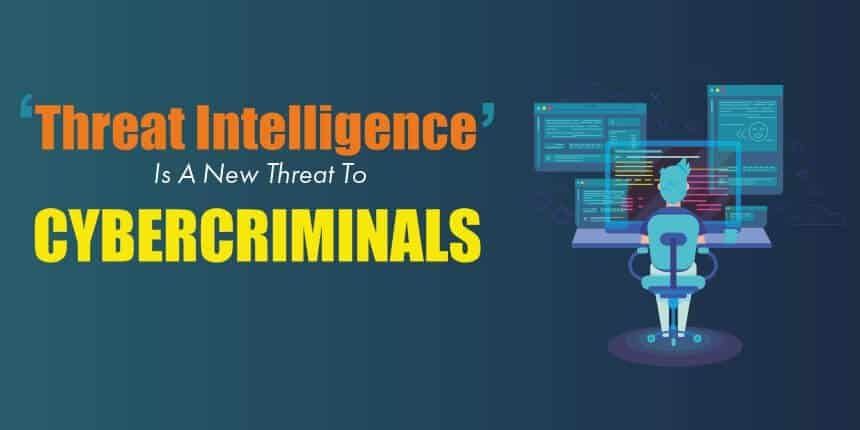Cyber threats are not a new headache for organizations, however, prevention from these cyber threats is not easy. As technology has evolved, the tools and techniques for evading the security controls have also evolved. In comparison to all the industries, the most affected industry is the financial services. The security professional has a tough time dealing with the cybercriminals. The records explain that the financial services industry has been targeted by cybercriminals more than any other, which is obvious – who would be a better target than banks and insurance providers to make money illegally. To make it tougher for the cybercriminals, the financial organizations have come up with a new remedy called Threat Intelligence.
What is Threat Intelligence?
The digital transformation has made digital technologies the heart of nearly every industry today. The automation has revolutionized the world’s economic and cultural institutions, but they have also brought risk in the form of cyber-attacks. Threat intelligence is the knowledge that allows you to prevent or lessen those attacks. Threat intelligence provides context like who is attacking, what are their motivation and capabilities and this information helps you make improvisation to the system security.
Threat intelligence can be defined as an evidence-based knowledge, which provides us with context on the problems and benefits us with advice on an existing problem or emerging hazards in the security industry.
Threat intelligence is often broken into three subcategories:
- Strategic Threat Intelligence provides a broad overview of an organization’s threat landscape. It is intended to inform high-level decisions made by executives and other decision-makers at an organization.
- Tactical threat Intelligence outlines the tactics, techniques, and procedures of the threat actors. It should help defenders understand, in specific terms, how their organization might be attacked and the ways to prevent these attacks.
- Operational threat intelligence is the knowledge about the cyber-attacks, events or campaigns. It gives specific insights that help incident response teams to understand the nature, intent, and timing of specific attacks.
Implementation of threat intelligence is important
The cybersecurity industry faces numerous challenges with developing technology and new threat actors. Some organizations try to incorporate threat data feeds into their network, but are clueless about what to do with the extra data, adding to the burden of the analysts who may not have the tools to decide what to prioritize and what to ignore. Cyber threat intelligence can address each of these issues. Threat intelligence is actionable and timely provides context and can be understood by the people in charge of making decisions.
The finance sector has been the most attacked industry consequently for three years in a row. The industry and finance firms are not well prepared for the challenges and struggling to meet the obvious needs of security. Larger financial institutions have sophisticated security capabilities, but smaller firms may not.
Challenges before the security services
- Updated cybercriminals
Criminals are proficient at exploiting weak links in the security chain and once in, can leverage other weaknesses to increase their control, enable repeated access and execute attacks without being detected. - Upgrading Security standards
Financial services firms face severe cybersecurity regulations. Also, as financial organizations adopt hybrid cloud, they face more inspection by regulators and must ensure workloads in the cloud meet new security standards. - Numerous ineffective tools
Many organizations have numerous, spoiled security tools that add complexity rather than providing insight. When these tools don’t integrate or communicate efficiently, they don’t provide the prominence that security teams need, to establish seamless, holistic protection, which is required to keep up with today’s threats. - Need to improvise the security techniques
The financial services industry, like other industries, is struggling with considerable talent gaps. On the other hand, the cybercriminals are targeting the industries with revolutionized technologies and improvising their techniques of theft. - Ignoring security fundamentals
Often, companies lack discipline with elemental security responsibilities. Depending on the observations, inadvertent insiders leave organizations open to the attack by falling for scams or social engineering, and through the improper configuration of systems, servers and cloud environments.
Improvising the security system
Strengthening the defense strategy by using capabilities like advanced data intelligence gathering and security analytics optimized with automation and AI. This will multiply the team’s efforts and evaluate advanced threats that may have bypassed the controls.
One should modernize while improving defenses and manage risk with enterprise cloud security. Try to consider the accelerated growth and the benefits of the hybrid cloud while securing data and workloads in the cloud. You can take advantage of technology to understand how a firm’s regulatory obligation exposure is changing over time and get ahead of compliance. By improvising efforts to make security a central focus for all employees will elevate security beyond the responsibility of the chief information security officer. Similarly, a security-oriented culture and expansion of executive contribution can tackle security challenges.
Threat intelligence helping the financial sector
- Prioritize Response: Incident response analysts face a constant flood of threats and alerts, so prioritizing is essential. With Threat intelligence, they can quickly identify the most important threats (while discarding those that are unimportant) and concentrate their time and expertise where it is most needed.
- False Alarms: Alert fatigue is a well-documented reality for security professionals. One of the most important functions of threat intelligence is the immediate (often automatic) discarding of “false positive” alerts, which can otherwise waste thousands of analyst hours over the course of a year.
- Helping hand to Security Leaders: Security leaders have a tough job. The decision about how best to use limited resources to secure their organization’s assets and data ultimately is their responsibility. Threat intelligence helps security leaders make informed decisions about whom to hire, which security technologies to acquire, and where to invest their budgets to minimize cyber risk.
The financial organizations are responsible for keeping their customer’s data safe and their money safer. The cybercriminals will stop at nothing to gain access to financial accounts; making use of the threat intelligence may help the organizations prevent the cyber threat to some extent.





